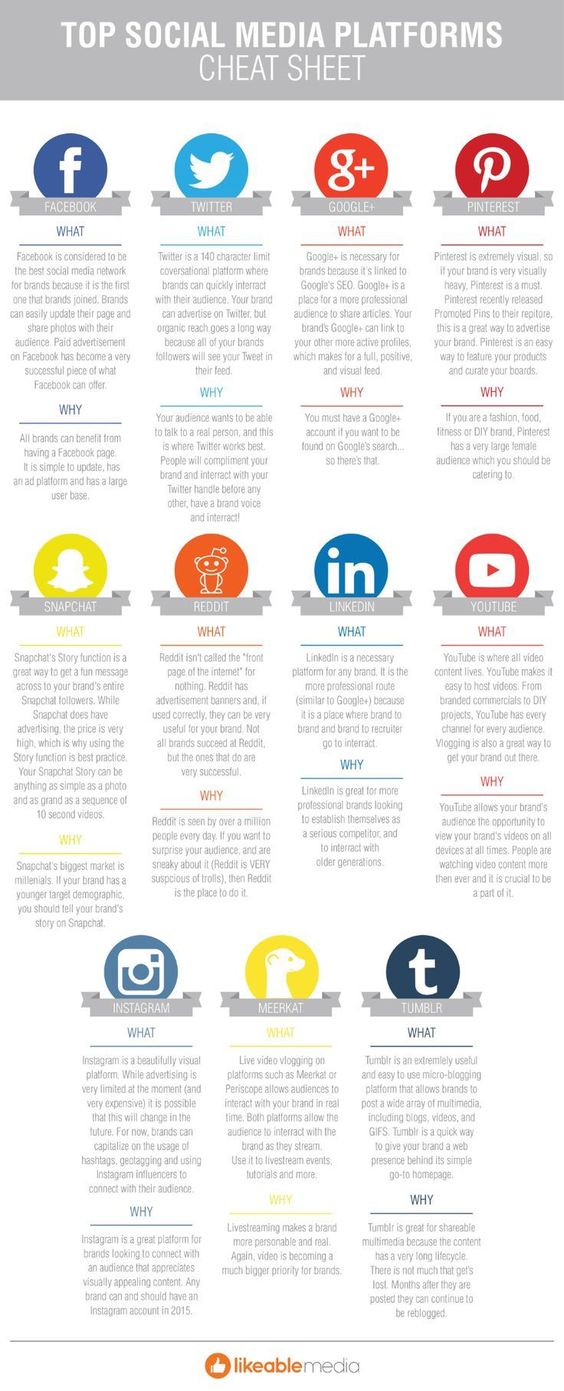By: Kyra Barker
Marketing is one of the key elements when it comes to running a successful business. How is your business supposed to grow if people don’t know you exist? There are some traditional ways that media can help to promote your business such as leaflets, billboards, trade shows, customized T-shirts, and even Custom Water that have all shown proven success. Nowadays though, there are multiple social media platforms out there. Knowing how to run a successful social media campaign is becoming vital and having brand awareness is paramount to succeeding. Many people don’t know where to start when it comes to building a brand which is why businesses will often look to companies such as Visual Objects, a brand consulting firm to help them get started. Once you have established your brand and all the elements that come with it, you’ll be ready to tackle the social media giants.
Social media will work well alongside your branding to get your business out there for the whole world to see. Though many on the surface seem like the same thing, each and every one is unique in its own way. All of these platforms can provide great value to a business but it can be confusing for businesses to remember which platform is best for what content. This little guide will help explain the popular social media platforms and what this platform is best used for. Social media has become a major part of business marketing, it allows businesses to promote themselves to a much wider audience. Whilst this is all well and good, it’s also important not to forget about your local customers too.
There are multiple ways to build awareness in your local area. One of the best ways to do this is by producing a business catalog to try and encourage customers to use your services or purchase your products. A catalog can help customers become more familiar with the business, helping the company to build awareness. To get some of these catalogs printed, it might be worth visiting Printivity (click now to see their services). This should help build awareness, hopefully, encouraging more people to use your business. This is a great way to build an audience. From there, social media marketing can develop this audience even further by adding more awareness and potential leads. Due to how useful social media marketing is, it’s vital that businesses fully understand it. This post will be focussing mainly on Facebook, Instagram, and Twitter although it is important to acknowledge there are many other platforms that can market for businesses and especially e-commerce ones, this could be using companies like Sunken Stone – Amazon Marketing Services or other places as a means to sell more of their products.
Facebook has been described in this class as the big whale of social media. This makes sense because it has over 1.4 billion active users daily, that’s a whale of a lot of users (sorry I had to). So Facebook has a lot of users, but what is Facebook good for?
- Companies who are targeting people in between the age range of 25-34
- Humanizing the brand- through Facebook, companies are to build relationships and show their human side of the brand
- Targeted posts– Facebook’s sponsored posts help to target specific audiences that your brand wants to reach
- Reaching a lot of people- Facebook has many active users so posting content here will likely have more reach if you post smart content- but this also means way more competition
Instagram is another popular social media platform used by many people. Instagram has reported that there is over 100 million daily active users. This app, designed for sharing photos and videos to connect you with your followers, has become a big part of building brand awareness for companies. The downfall to Instagram is its tricky algorithm. One needs to build a strong strategic plan to have successful reach with Instagram. So how can businesses use Instagram?
- Instagram is a great way to build brand awareness-sharing high quality pictures of your product or your company is a great way to build brand awareness through Instagram
- Finding Influencers- Instagram has tons of influencers that can be a really good tool to help build awareness around your brand
- Targeted posts- Instagram allows you to sponsor targeted posts, like Facebook but not as specific, to help reach a desired audience
Twitter is used as a conversational social platform designed for short, straight to the point conversations. Twitter is a great way for brands to engage with their audience and educate them on news surrounding their business. What else is Twitter great for?
- Customer service- Twitter is a great place for brands to build excellent customer service. Consumers can use this platform to express comments/concerns and the brand can react instantly to help solve the problem
- Engage in conversation- Twitter is all about conversations, brands have the ability to hop into conversations (surrounding their company of course) and show their engagement with their audience
- Educate your audience- Twitter is a great tool to update your audience on what is happening in the company
- Building your brand voice- Twitter is also useful in building a brand voice. Twitter is another social platform that is useful in showing the human side of your brand
There are plenty of more social media platforms out there that are so useful to brands that I didn’t get to touch on. This small cheat sheet helps explain the platforms in detail and why they are useful.
Twitter: @kabarker_
LinkedIn: Kyra Barker





Love this guide. Thanks Kyra!!! It’s easy to forget each platform optimizes differently, especially when you auto-sync everything.
This guide is dope! I like how you highlighted the important aspects of each platform. The infographic is interesting because it includes social platforms that aren’t mainstream but still would be important to know for future purposes and competitor analysis.
This is a really helpful blog, especially for companies who may need basic info on what each platform is best for and who it best targets. I feel as if many companies often link platforms and believe they can post the same content on each one, when in actuality each post should be carefully curated for each specific platform.
I really loved your post, this is the perfect cheat sheet. Your post was really easy to understand- social media and the internet can be really daunting and difficult to wrap your head around, but this post could save a person quite a few headaches. No matter your experience with social media, everyone can stand to gain a little knowledge of the social media game. In addition, your post proves that every platform is different and has different needs and wants. A company’s audience will alter a little based on what platform they are using. Just because a company can create an account does not mean that they know how to use it correctly based on what platform they are on. Social media is an art and it is not for everyone.
Ooo.. this was a very helpful post! These are great ideas to think about when constructing a social media calendar. When thinking about key publics, do they engage on Facebook, Twitter, Instagram, all of them? For me, I personally like Facebook, Twitter and Instagram. I’m not a fan of Google Plus or YouTube, but some key publics may be. It’s important to also think about what each platform serves as for the key public. Twitter is very conversational where Instagram is very photo-based. Thanks for the post!